Exploring the Old Imperial Capital
Hue is a city known for its grand imperial buildings, historical citadel, tombs, and temples. It’s filled with UNESCO-designated complexes, and alongside those, home to some of the best Vietnamese foods you can have.
It’s typically a quick stopover for those en route to Da Nang, but I’d recommend staying a little bit longer and enjoying the history, culture, and food of this amazing historic city.
Check Places to Stay in Hue (Expedia) | See Food Tour Prices (GetYourGuide)

Things to Do & See
Imperial City
Hue’s crown jewel, the Imperial City is a sprawling complex of royal halls, temples, gates, and gardens once reserved for Vietnam’s Nguyen Dynasty. Despite damage from war, the grandeur of its faded red walls and intricate architecture still stirs the imagination.
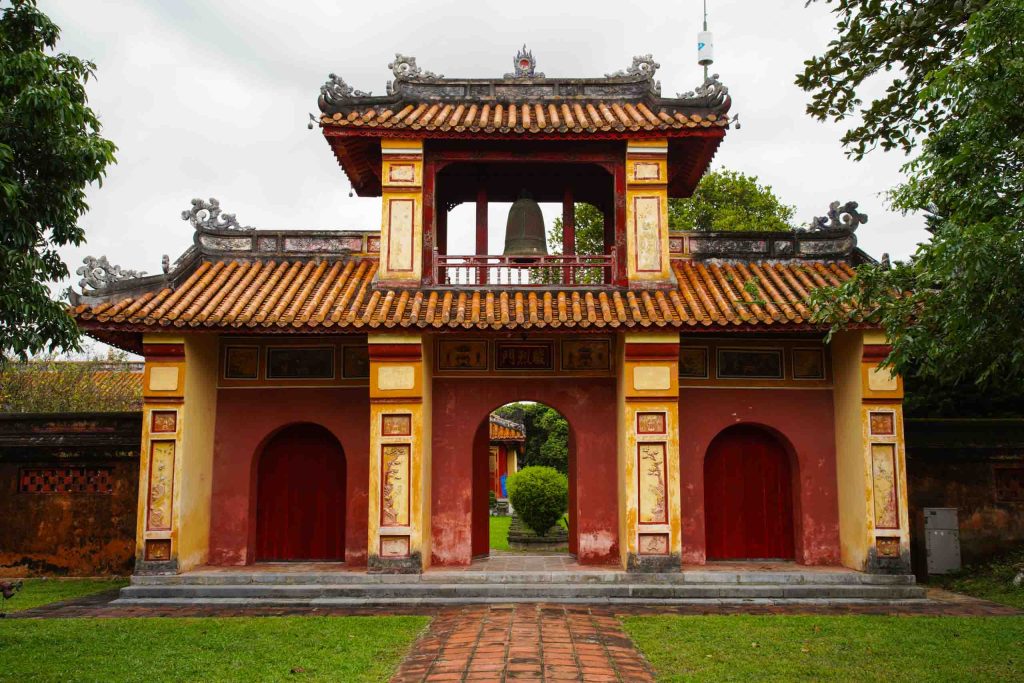
Arrive early to avoid the heat and crowds, to take your time walking the Forbidden Purple City, a part of the complex that was once off-limits to all but the emperor, his wives, and his eunuchs. This is a must-visit if you just have a day here. Tickets at 200k VND, 100k VND for the audio guide (which is highly recommended).
Directions to Imperial City | Check Prices of Tours (GetYourGuide)
Dong Ba Market
The heartbeat of Hue, Dong Ba Market is a whirlwind of color, smells, and sound. Fresh herbs are sold next to knockoff Adidas slippers, and right next to that would be an authentic silk ao dai stall. Right outside? A row of ladies chopping meat for sale for your next pot of bun bo hue. You’ll find just about everything here. It’s a great place to try street foods like banh loc or che. Bargain here, but do so politely.
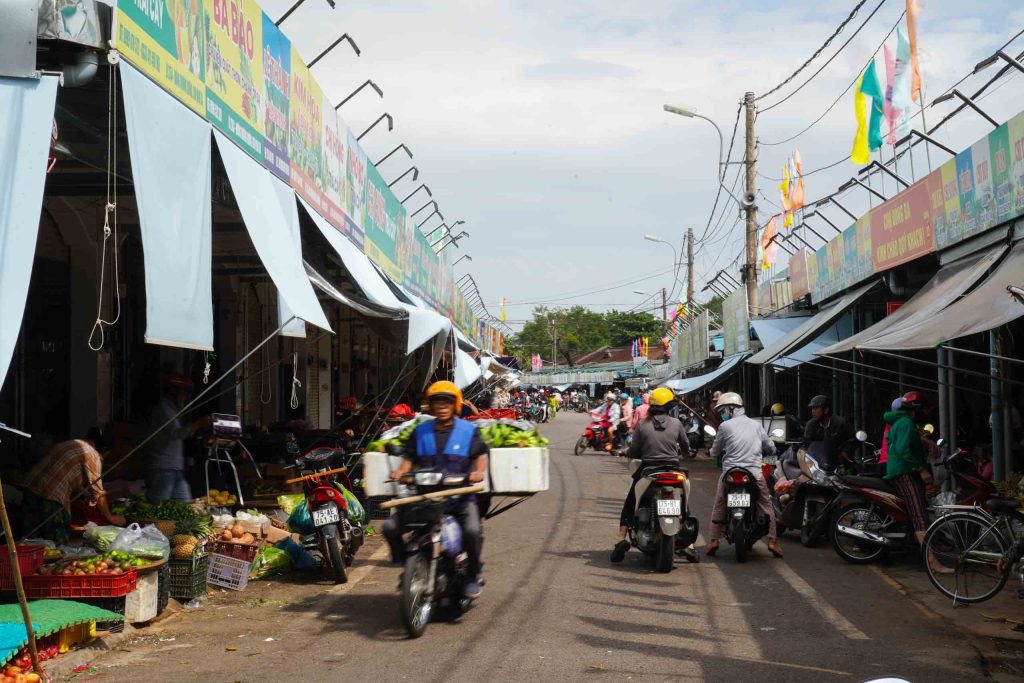
Trường Tiền Bridge & Park
Trường Tiền Bridge is one of Hue’s most iconic landmarks, a graceful arched steel bridge designed by Gustave Eiffel. At night, it glows in multicolored lights, putting up a gorgeous little light show spread over the Perfume River. It’s especially beautiful to cross by foot at golden hour, with vendors in the park nearby (kitty corner from the market) adding life to its surroundings.
Directions to Trường Tiền Bridge

Hue Night Walking Street
On weekends, Hue’s Walking Street near the riverbanks transforms into a lively pedestrian-only zone. Street performers, local handicrafts, night snacks, and open-air cafes make it a favorite hangout spot. Once quiet bars are buzzing with energy here when the sun goes down. Mostly a home for expats and vacationers, the street is a nice place to check out and meet fellow travellers.
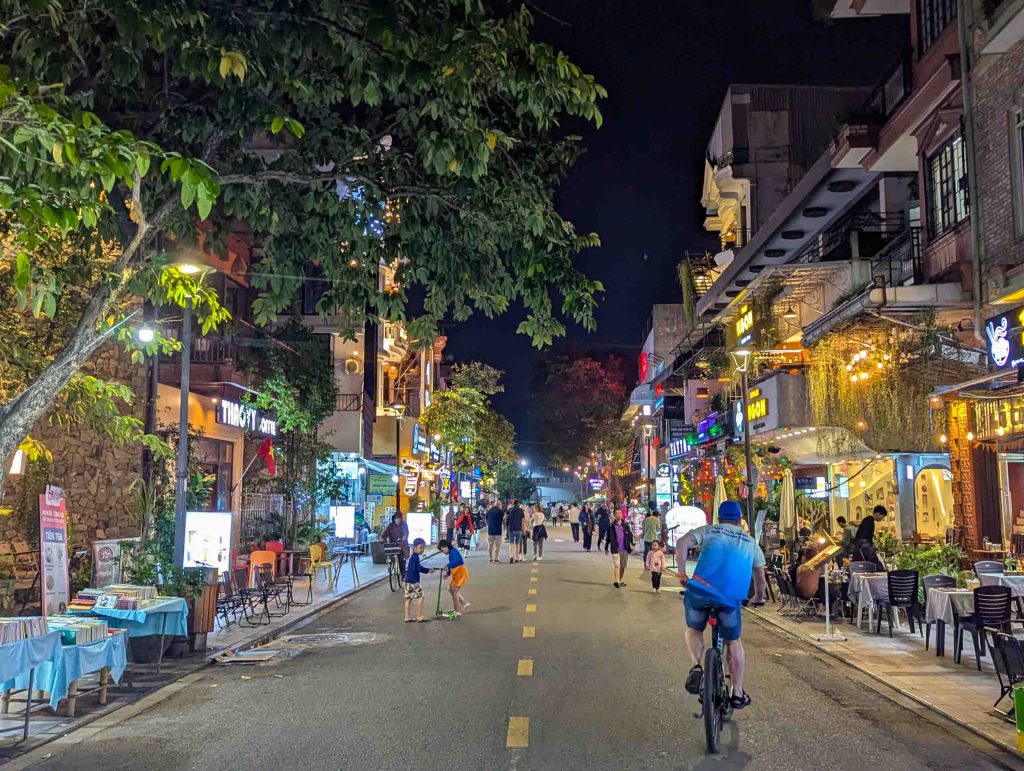
Hồ Thuỷ Tiên
Half eerie, half enchanting, the abandoned Thuy Tien Waterpark has become a cult-favorite spot for urban explorers and photographers. The dragon-shaped aquarium looming over the lake is a sight to see. While officially being a deserted park, the entry is free, but visitors often cite entry fees from security that are arbitrary upon entrance.
Directions to Hồ Thuỷ Tiên | Check Prices of Tours (GetYourGuide)
DMZ Tour
For history buffs, a DMZ day tour from Hue offers a sobering insight into the Vietnam (or American, depending on your geography) War. Sites like the Vinh Moc Tunnels, Khe Sanh Combat Base, and Ben Hai River tell stories of resilience and trauma.
Check Prices of Tours (GetYourGuide)
Things to Eat & Cafes
Bun Bo Hue
Bun bo hue is a tangy, salty, spicy, and rich bowl of noodles, often served with pork hock, fish paste, beef shank and other beef cuts. It’s a collagen-rich, chilli-red cousin of pho, with thicker noodles and a far spicier flavor profile.
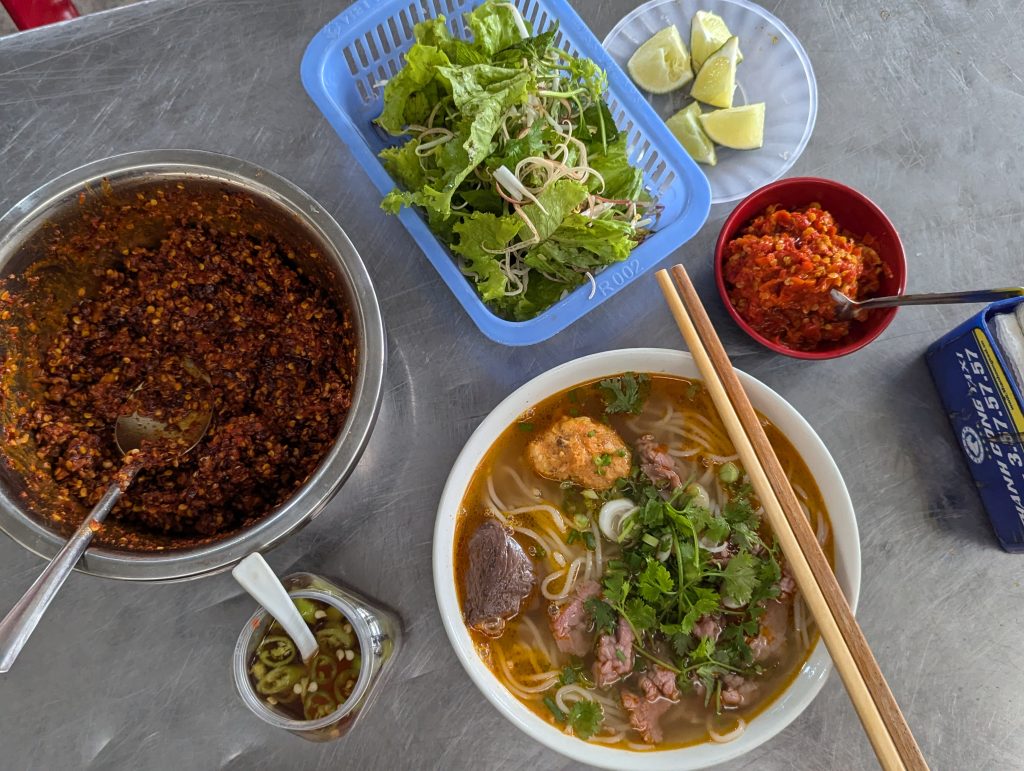
It’s a wonderful bowl to start your day off with, which is when locals typically will eat this. Walk around the city in the very early hours of the morning, right after the sun rises, if you see a restaurant open, chances are, it’s serving bun bo hue for breakfast. Look for bun bo hue for dinner here, and you may get some strange looks. It’s a must-have dish, every day if you can, when you’re in its birthplace.
Feeling like bun bo hue at home? Try my pork-based bun bo hue recipe here!
Where to go: Bún Bò Bà Tuyết, Bún bò Huế O Oanh, Bún Bò Thủy, Bà Hoà
Nem Lui
Nem lụi consists of grilled lemongrass skewers of seasoned pork that smoke and hiss over charcoal. The meat is subtly sweet, slightly spiced, and rolled in rice paper with green banana, herbs, and cucumber before being dunked into a fermented peanut sauce unique to Hue. Eating it is an interactive affair, the kind where fingers get involved, and where staff laugh at you for ordering so many.
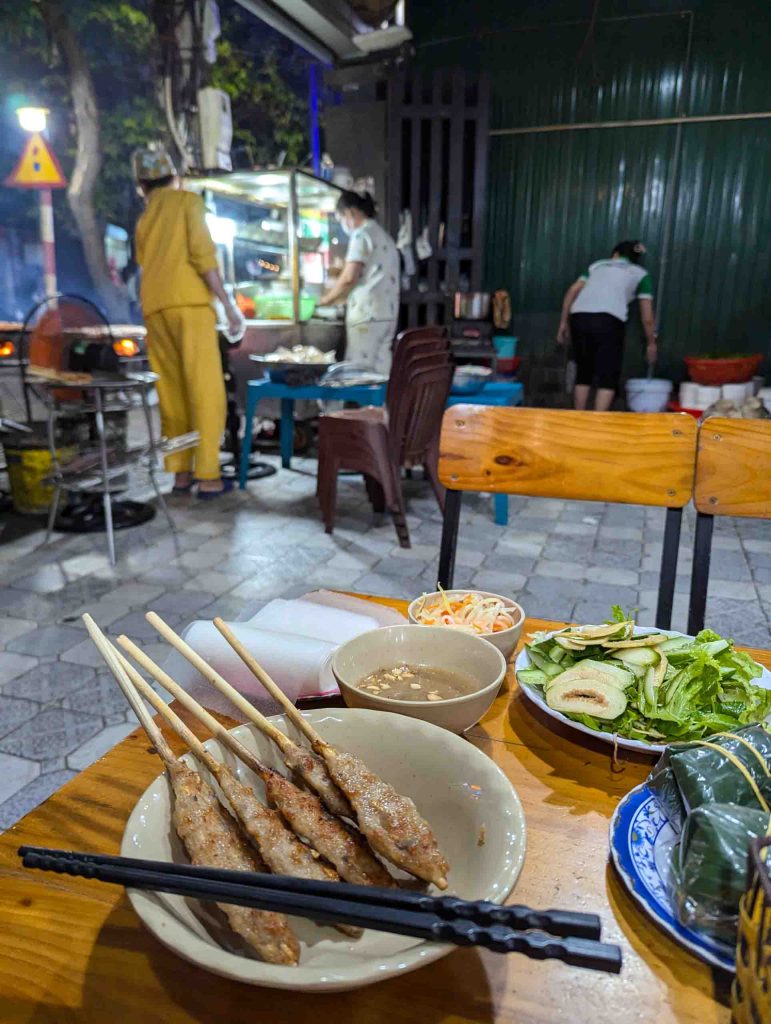
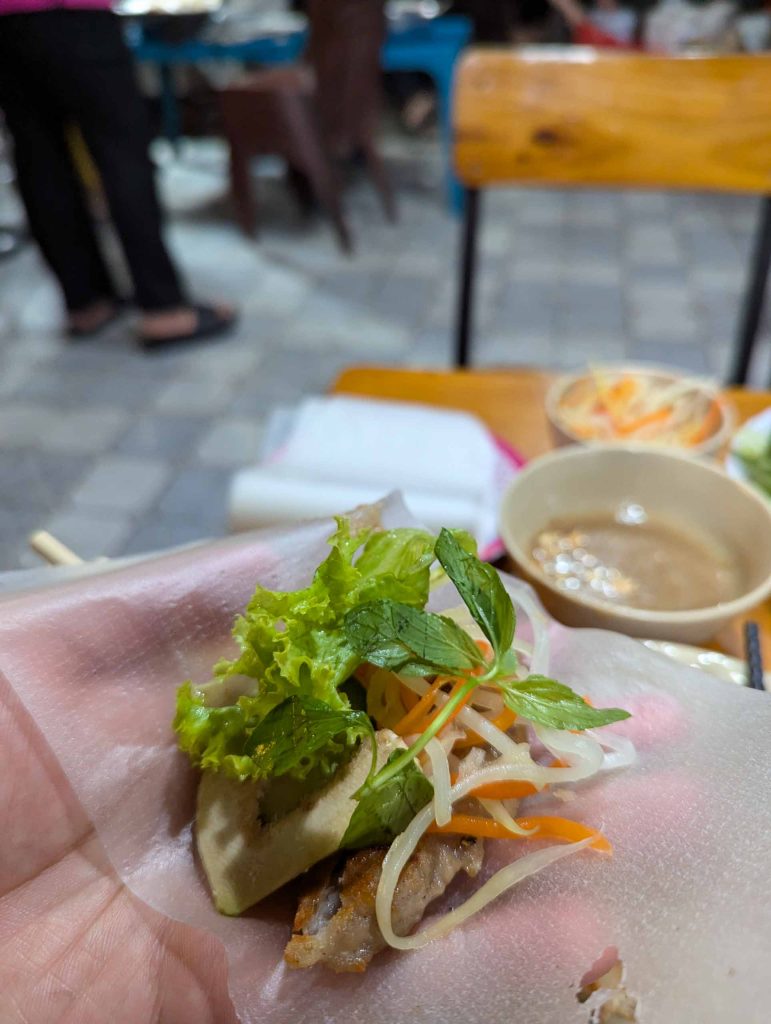
You’ll smell these delicious skewers before you see them, especially around night markets or sidewalk grills.
Where to go: Nem Lụi O Đen
Food Guide for Hue
I dive much deeper into many of Hue’s specialty foods in an in-depth post below.
See Food Tour Prices (GetYourGuide)
Places to Stay
City Center (around Walking Street): Probably the most bustling area to stay in Hue. Comparatively speaking, the main downtown area in Hue is tame compared to many other cities in Vietnam (ie. Ho Chi Minh, Hanoi), and the traffic in terms of cars and people is far less. It won’t be as noisy here compared to other central areas in big Vietnamese cities, but you’ll be close to pretty much everything. The trade off is that there are many scooter drivers here that solicit for business, and they are probably the most relentless ones of all of Vietnam that I experienced.
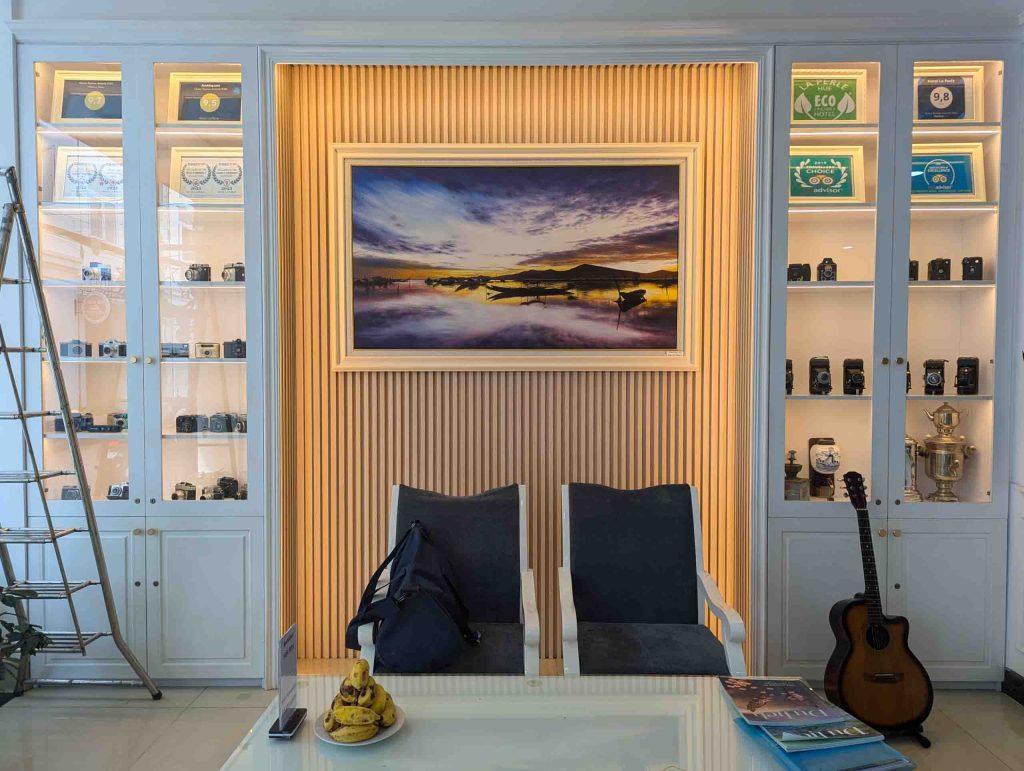
Thuan An Beach area: A quieter, coastal escape just outside the city. Good for travelers wanting beach vibes with Hue’s food and culture still nearby.
Near the Imperial City: Staying north of the river puts you close to the historical core and offers a quieter, more atmospheric experience, especially for history lovers or photographers.
Personally, I stayed at Hotel La Perle in the central city area, around the main walking street, but off by a block. It was very quiet and peaceful, and I never had an issue with noise here despite the central location.
Check Places to Stay in Hue (Expedia)
Sample 3-Day Itinerary
Day 1
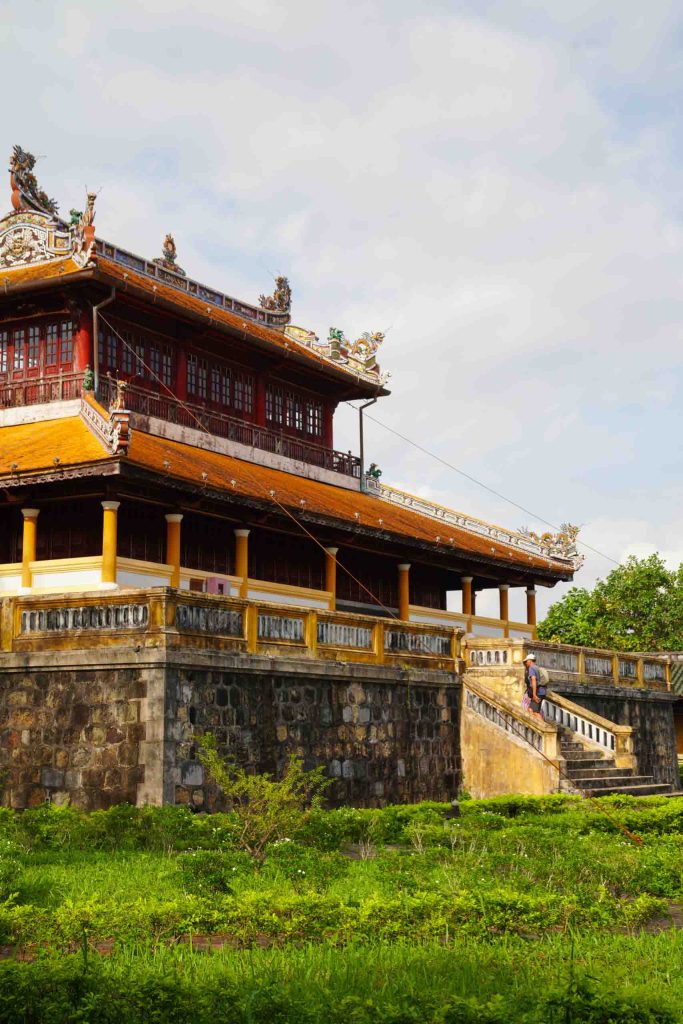
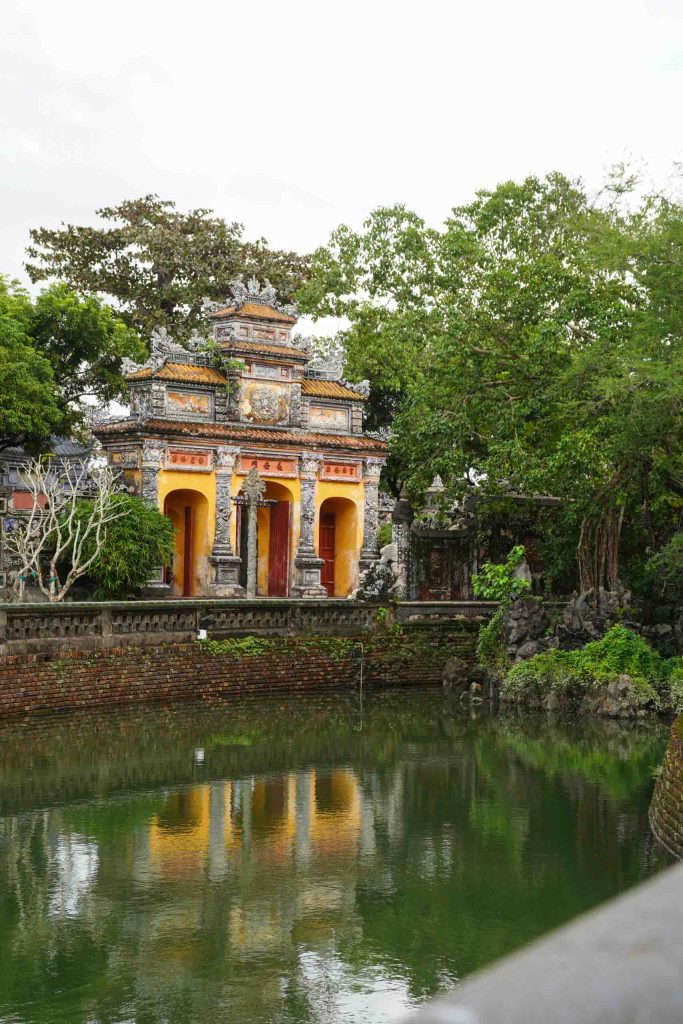
Morning: Bun bo hue breakfast, Visit Imperial City
Afternoon: Continue exploring Imperial City, bánh khoái for late lunch
Evening: Nem lui for dinner, Walking Street for festivities
Day 2
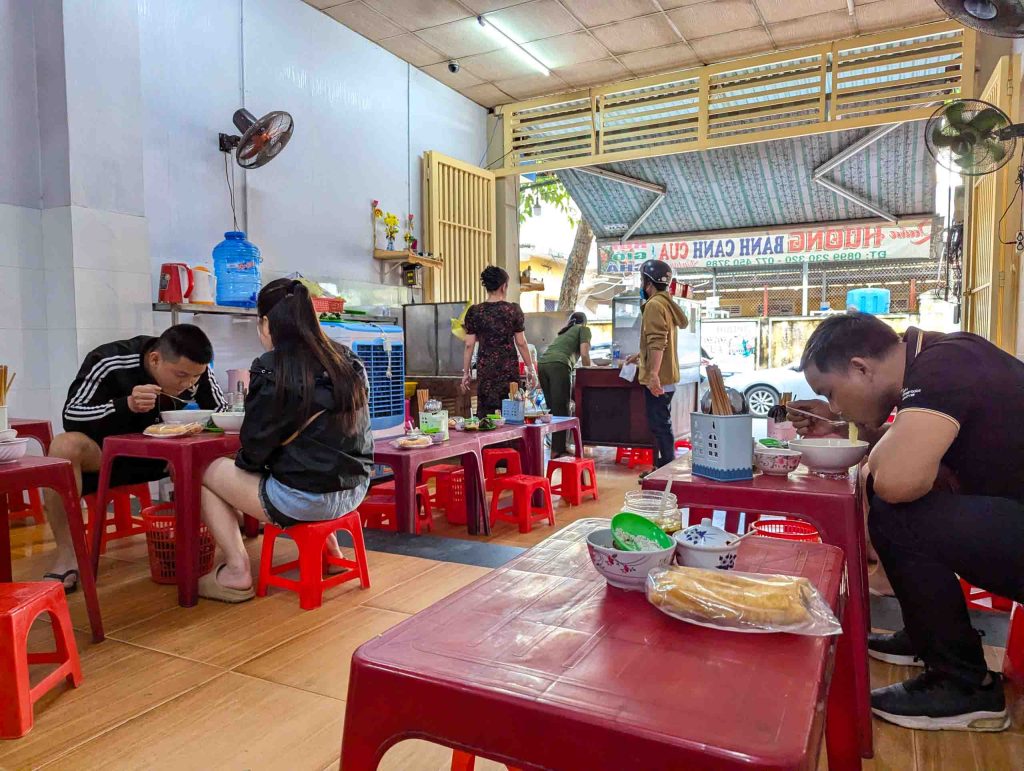
Morning: Bun bo hue breakfast, take a small day trip out to visit Hồ Thuỷ Tiên or Lăng Khải Định
Afternoon: Try Bánh canh cua, visit a cafe for salt coffee
Evening: Stroll the Trường Tiền Bridge and take in the lights and sights
Day 3
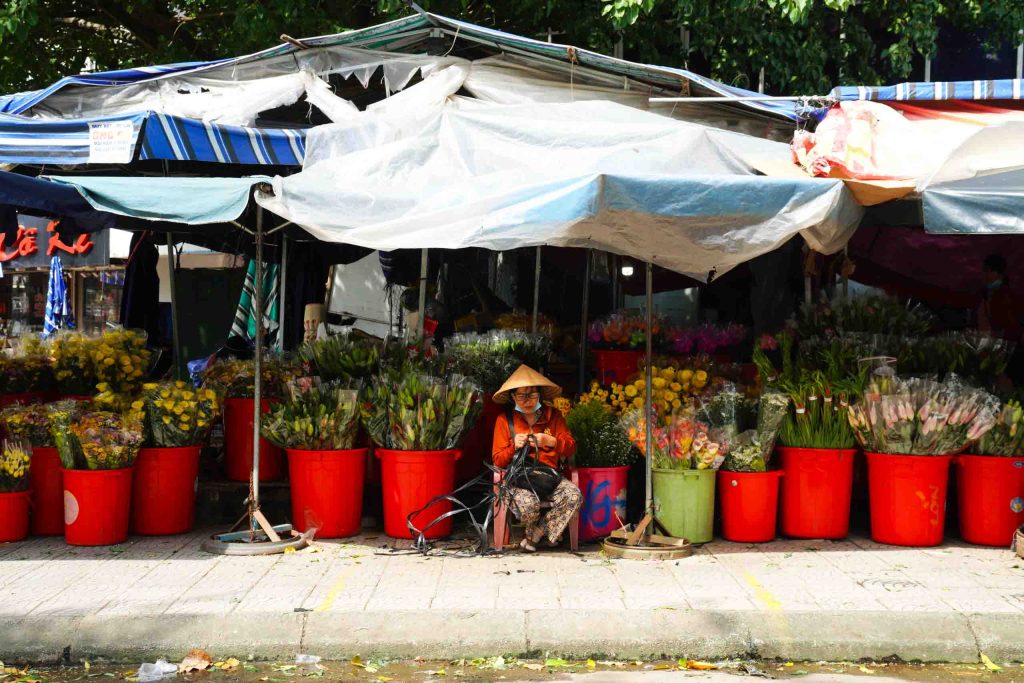
Morning: Bun bo hue breakfast, Dong Ba Market
Afternoon: Try cơm hến and bánh bèo in Cồn Hến, the little island neighborhood known for both
Evening: Dinner by the Perfume River
General Recommendations
- Start your days early: Many breakfast restaurants close before 10am
- Respect temple etiquette: Wear modest clothing (covering shoulders and knees)
- Weather awareness: Hue has a rainy season from September to January
- Bring cash! ATMs were harder to find here that didn’t have fees than other cities in Vietnam
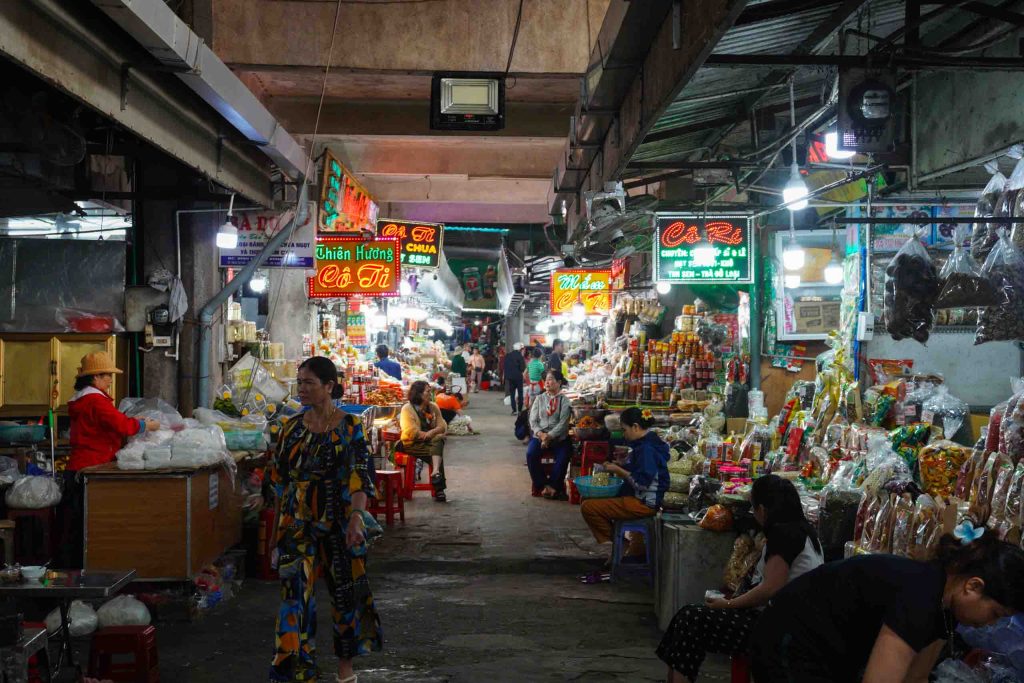
- Rent a bike or motorbike: Hue is relatively flat so a bike ride around town is easier than most other places
- Be prepared for aggressive scooter drivers asking you for business, especially in the main city center area
- Take it slow: Hue isn’t a fast-paced city, lean into its quiet, gentle rhythm, and you’ll appreciate its soul more deeply
- Hire a local guide for the tombs: They’ll bring context and history that really elevates the experience beyond just pretty photos
Check Places to Stay in Hue (Expedia) | See Food Tour Prices (GetYourGuide)
Thanks for Reading!

My name is Alex Lau, and I’m a travel blogger and photographer. I’ve worked in the digital marketing business for 7+ years before I decided to uproot and explore this little blue marble we find ourselves on, meeting new people, telling their stories, and discovering new places.
Follow me on Instagram | Contact me for partnerships
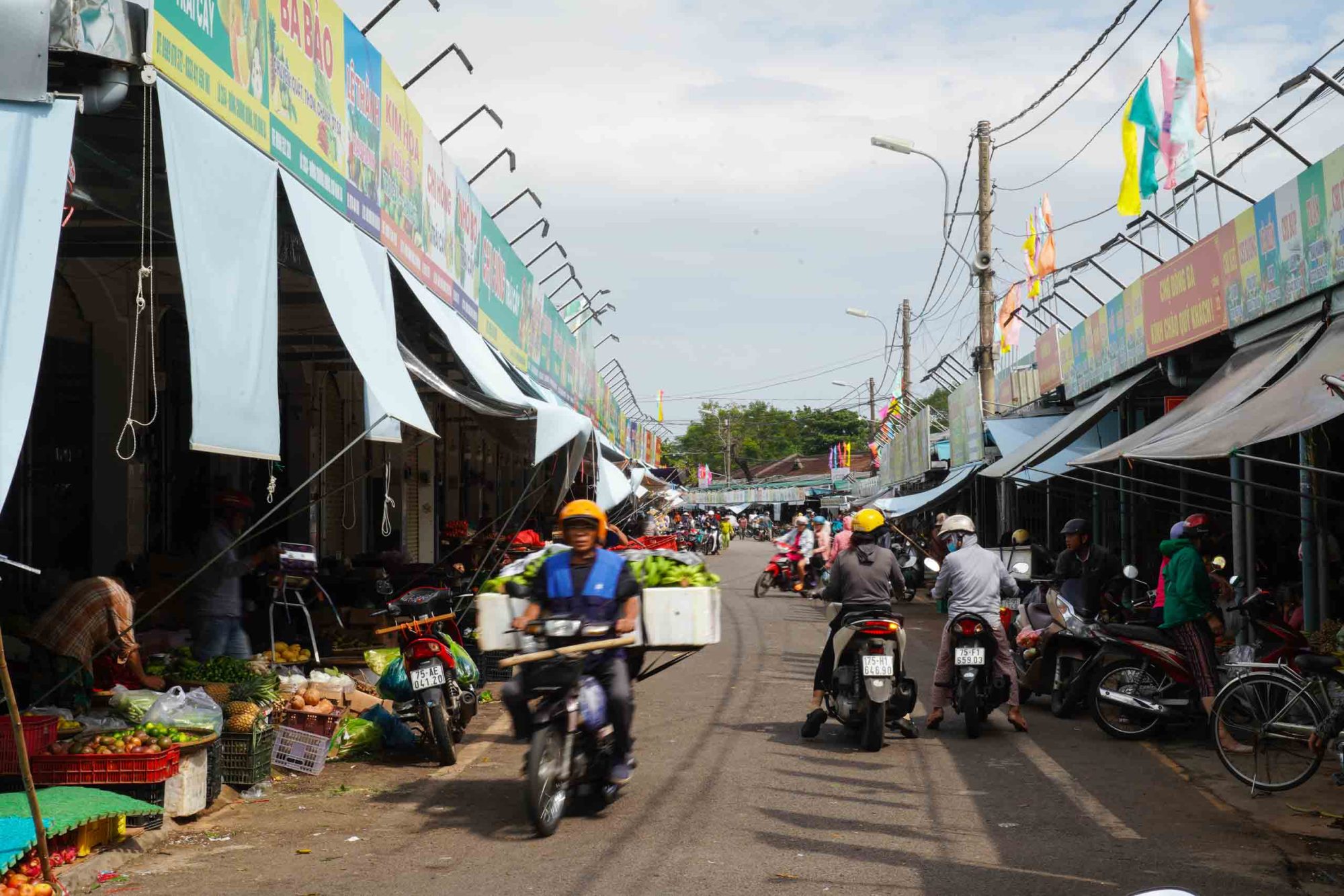
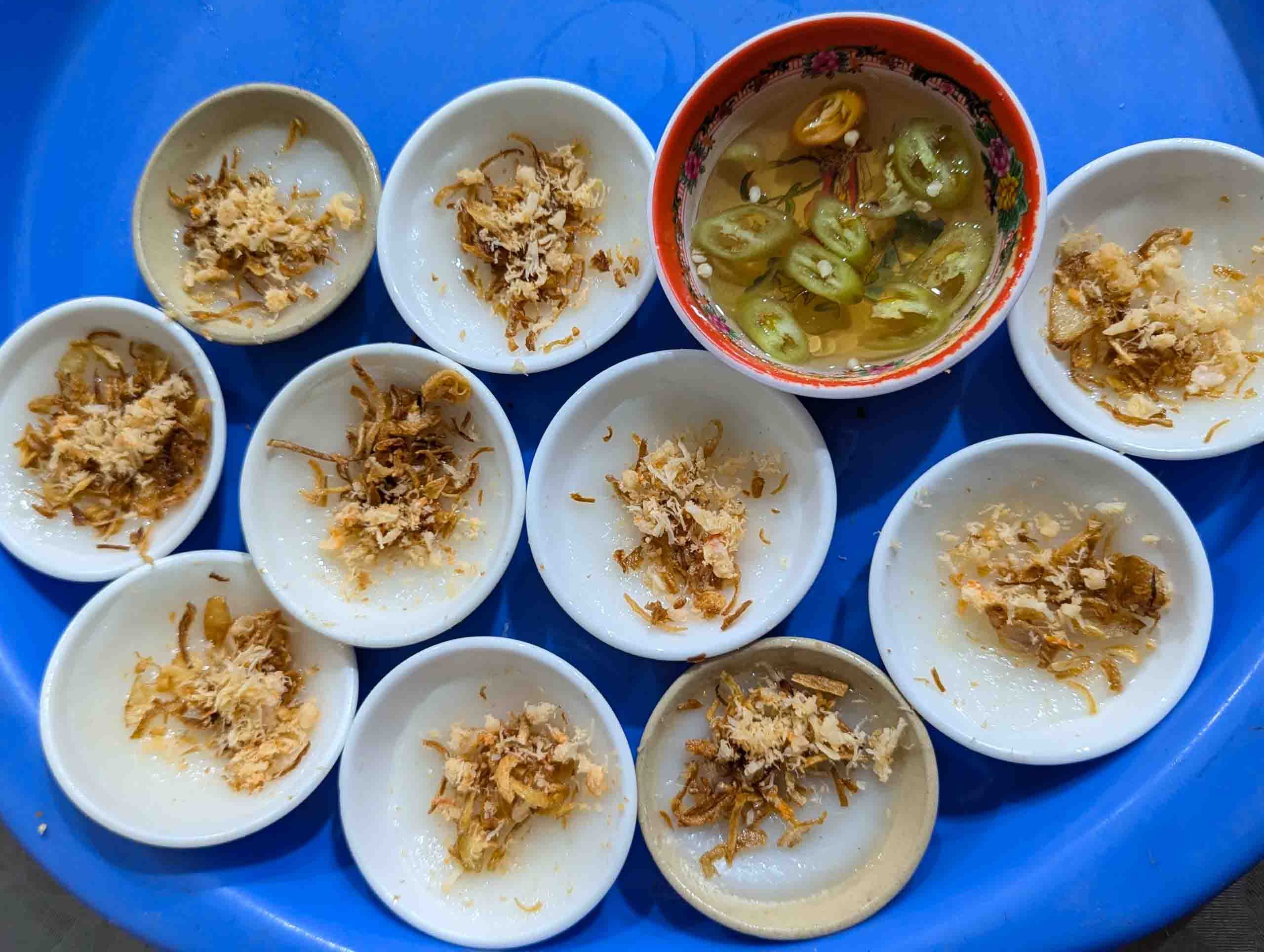
Your blog is a testament to your dedication to your craft. Your commitment to excellence is evident in every aspect of your writing. Thank you for being such a positive influence in the online community.
Breakfast looks great…will have trouble waking up before 10am tho
You can do it 👍🏻